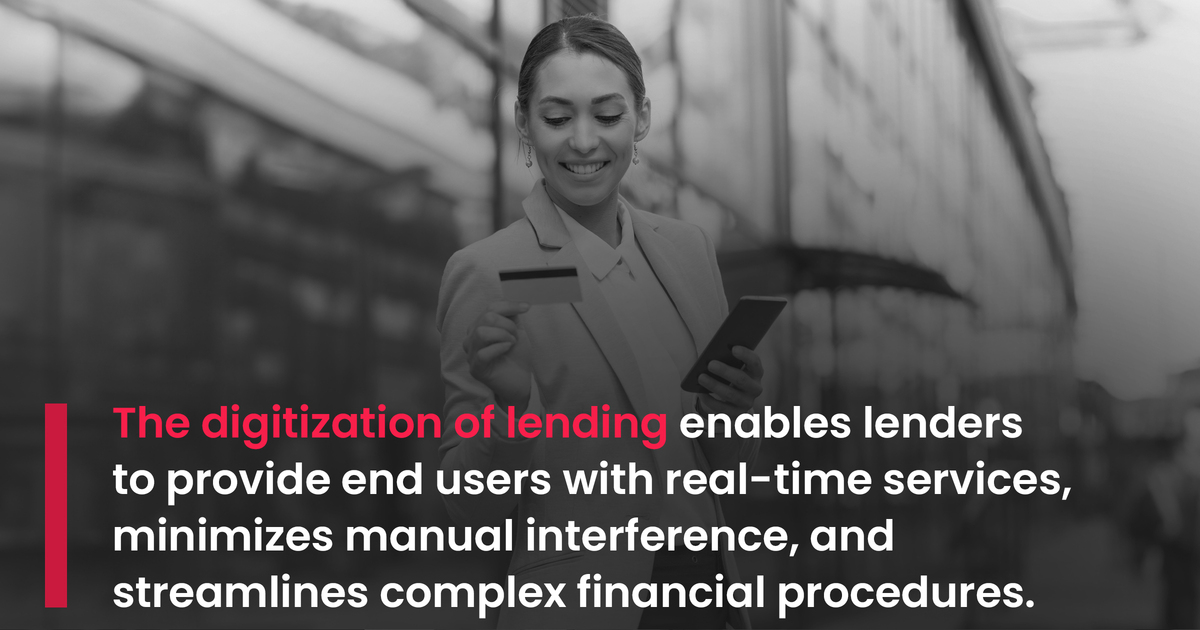The lending industry is essential to every country’s financial system since it provides the necessary funding to firms and individuals, having the role of a catalyst for economic development.
Companies in this industry play a crucial role in supporting the overall health of the economy by encompassing a wide range of financial institutions, goods, and services.
It is therefore essential for borrowers to gain insight into the lending sector and the loans on offer. Companies must stay ahead by looking at forecasts rather than trends, ensuring they remain at the forefront of industry developments.
What to expect from the lending industry in the near future?
The lending market has experienced significant growth in recent times.
According to data presented in the Lending Global Market Report 2024, with a compound annual growth rate (CAGR) of 7.8%, the lending market is expected to register a strong increase from the US$10,505.27 billion registered in 2023 to US$11,325.13 billion in 2024.
Yet this is still below the previous increase registered between 2022 and 2023 when the figure was 10.1%.
Some of the possible reasons contributing to this growth include:
- Economic development in emerging nations.
- Growing access to the internet.
- Rising consumer spending.
- Increased construction activity.
- A spike in the number of auto loans.
- A continually increasing demand for higher education (according to UNESCO, globally there are about 254 million students in universities – an almost 100% increase over the past 20 years).
Since expert networks can provide lenders with access to specialized knowledge and insights that can enhance decision-making processes, lenders can gain a deeper understanding of a borrower’s industry, the competitive landscape, and any potential risks, which is crucial for making informed lending decisions.
Leveraging expert networks in the lending industry (case studies)
At RightAngle, we assist lending industry companies by providing timely and relevant information that is hard to obtain and often missed via traditional communication channels.
Auto lending market
One of RightAngle’s clients sought to evaluate the future performance of lenders such as banks and credit unions in the auto lending market. In particular, they needed to access experts in auto lending from these institutions, covering aspects such as used cars, new cars, commercial vehicles, refinancing, and repossession.
RightAngle conducted a market analysis and identified the most suitable subject-matter experts. These experts addressed the client’s questions and provided insights into the auto lending market size, future outlook, the key drivers of car financing and refinancing for banks and credit unions, and more.
As a result, our client gained valuable information on the major players in the auto lending market, current and projected market growth rates for banks, potential market share loss to FinTechs, key success factors, and risks to future growth for banks and credit unions.
SLA Benchmarks for Lending Processes
Another respected client looked forward to evaluating the range of Service Level Agreement (SLA) benchmarks across banking processes, specifically focusing on mortgage/lending and saving/investment processes. In the banking field, they needed experts from Global Business Service (GBS) centers and contact centers.
At RightAngle, our associates managed to identify the most suitable subject-matter experts who were familiar with the UK and Continental European markets. These experts provided insights into historical and current SLA trends for mortgage processes and shared their viewpoints on savings and investments, covering aspects such as account opening, withdrawals, transfers, and more.
Ultimately, our client was able to obtain the required data on the benchmarks for mortgage and lending processes, the evolving shape of these SLAs, and the key performance metrics in the banking sector.
Commercial Lending
One of our clients was studying the underwriting process for commercial lending at major U.S. banks. They were looking into the credit decisioning process and the different criteria used in underwriting (AML and fraud data, financial health and income data, tax liens).
RightAngle conducted a tailored search to identify the relevant professionals with knowledge of compliance requirements, risk management measures, and risk-related data sources that play a role in credit decisioning.
As a result, RightAngle recommended senior professionals with titles such as VP Underwriting, Head of Data and Risk, VP Risk & Analytics, Chief Credit Officer, Head of Risk Strategy and Data. Our client then had their questions answered and finalized their research.
Top trends in the lending industry
Over the next few years, experts anticipate a number of notable trends in the lending industry.
1. Digitalization of the lending market
Digital technologies enable the conversion of conventional corporate procedures into digital formats, a process known as digitalization. Technological advances simplify operations, increase accessibility, and improve client experiences.

In addition, a fairly recent cryptocurrency lending service is gaining popularity. This is a type of P2P lending that allows the lending or borrowing of cryptocurrency via a decentralized network.
2. More focus on participation lending
Participation lending is becoming more and more popular due to its capacity to reduce the risks involved with large capital lending. This process means that several lenders can take part in lending capital to one borrower.
Financial organizations collaborate to offer more lending alternatives by sharing capital and risk. Through the elimination of manual tracking and the optimization of efficiency, this method accelerates the loan process.
3. Loan as a Service (LaaS)
LaaS is a part of Banking-as-a-Service (BaaS) and is a cloud-based infrastructure and Application Programming Interface (API) that enables organizations to create, design, and administer their own financial services.
This process involves collaboration with a third party—a LaaS provider—a regulated loan professional proficient in regulatory aspects.
 The value of the lending as a service market in 2022 was estimated at US$7.04 billion, and between 2023 and 2030 this figure is anticipated to increase by a CAGR of 26.5%.
The value of the lending as a service market in 2022 was estimated at US$7.04 billion, and between 2023 and 2030 this figure is anticipated to increase by a CAGR of 26.5%.
4. Artificial intelligence in the lending industry
AI-powered lending platforms use machine learning algorithms to accelerate the lending procedure. AI-based lending entails employing data analytics to assess reliability, risk, and other variables that impact the likelihood of a borrower getting a loan.
With AI’s assistance, lenders can make better decisions about the loan size, interest rate, and approval criteria by using real-time data analysis.
Final word
The lending industry must remain well-informed, prioritize customer-focused approaches, and embrace technological advances. With the assistance of expert networks, lenders can remain competitive in a changing market, being able to spot new trends and lending opportunities.
Suggested reading:
How Does RightAngle Ensure Tailored Expert Support for Clients?
Fintech Ecosystems: Future Trends and Expert Networks Impact
The Role of Expert Networks in Navigating the Real Estate Industry
Share to

